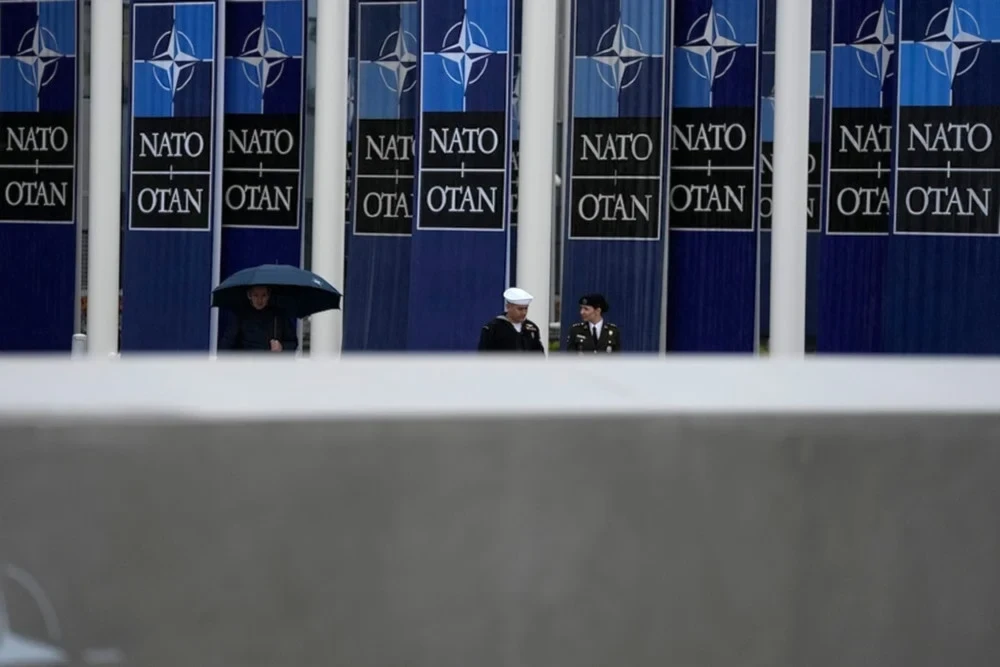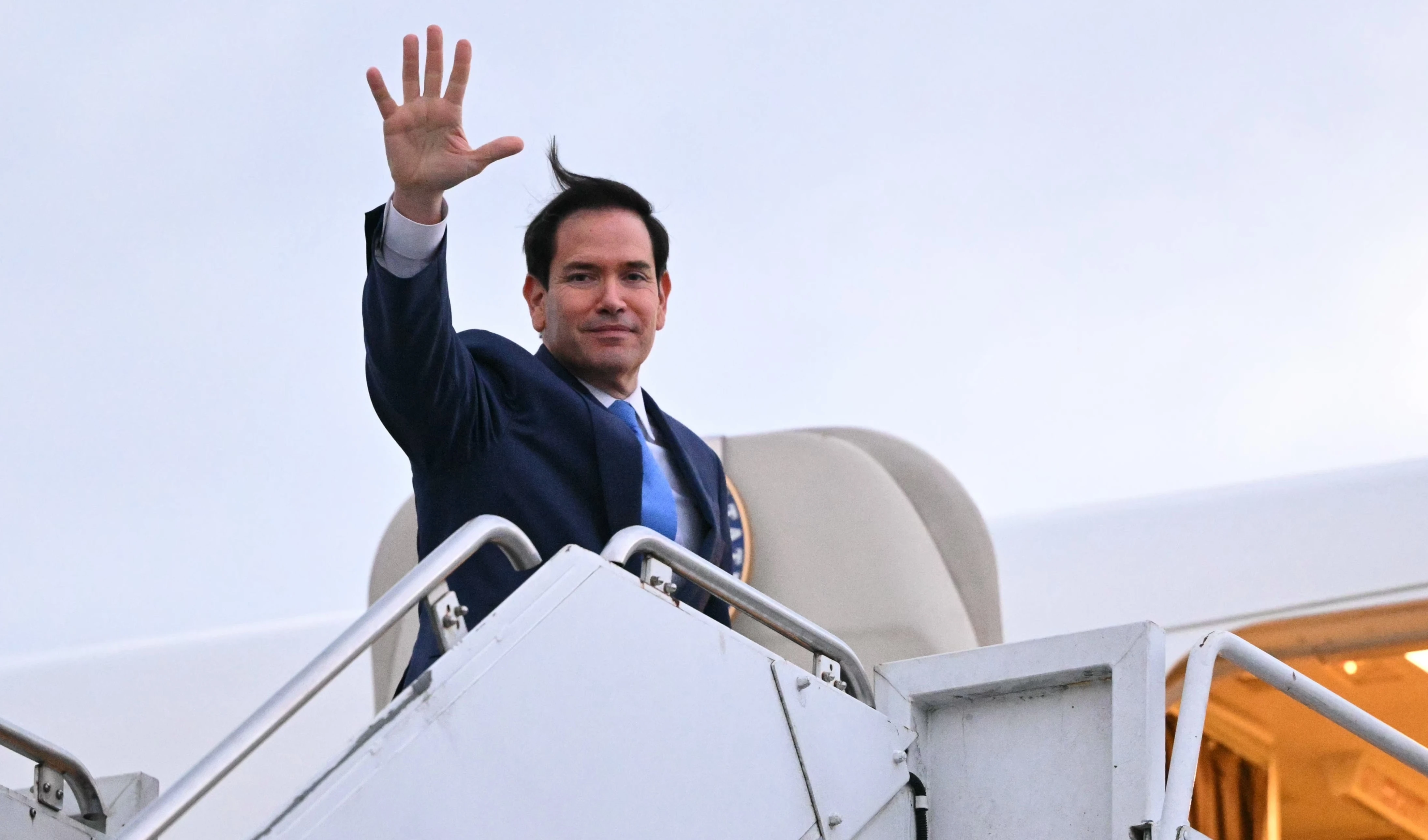NATO defense spending to rise, target of 5% of GDP over 10 years
US Secretary of State Marco Rubio says all NATO countries will commit to raising defense spending to 5% of GDP within 10 years, as pressure mounts ahead of the NATO summit in The Hague.
-

Two military personnel walk by NATO banners prior to a wreath-laying ceremony at NATO headquarters in Brussels, April 4, 2024. (AP)
US Secretary of State Marco Rubio announced that all NATO member states are expected to agree on a new defense spending goal, raising their military budgets to 5% of GDP within the next ten years.
"All [NATO countries] will have agreed on a goal of reaching 5% [of GDP on defense] over the next decade," Rubio stated during an interview with Fox News, highlighting a major shift in the alliance’s strategic and financial posture.
Rubio also noted that by the time of the upcoming NATO summit in The Hague, every member of the alliance will have reached at least 2% of GDP in defense spending, with several countries expected to exceed 4%.
On Thursday, German magazine Spiegel reported that Germany had accepted Washington’s demand to increase its defense spending target to 5%. The news followed remarks by German Foreign Minister Johann Wadephul, who confirmed Berlin's alignment with the proposed target.
Denmark has also indicated its openness to the US proposal. Danish Foreign Minister Lars Lokke Rasmussen stated that Copenhagen supports a significant boost in military spending, signaling growing alignment among European NATO members with the US position.
NATO summit in The Hague to finalize new spending benchmarks
The upcoming NATO summit, scheduled for June 24–25 in The Hague, will serve as a decisive moment for the formal adoption of the new defense spending targets.
According to the Dutch Foreign Ministry, the event will host around 45 heads of state and government, 45 foreign and defense ministers, and approximately 6,000 delegation members, totaling around 8,500 attendees.
The summit is expected to formalize the 5% GDP commitment as part of a broader agenda to strengthen collective defense and boost Europe's military readiness amid ongoing global tensions.
Trump’s longstanding push for higher NATO contributions resurfaces
The push to raise NATO defense spending to 5% of GDP aligns with demands made repeatedly in recent years by US President Donald Trump, who criticized European allies for what he described as inadequate financial contributions to NATO.
Trump had long maintained that European NATO members were disproportionately reliant on US military support, urging them to bear a larger share of the alliance’s defense burden.
As geopolitical tensions persist, including military aid to Ukraine and NATO’s evolving posture in Eastern Europe, the proposed increase signals a renewed transatlantic consensus on the need for sustained and scaled-up military expenditure.

 3 Min Read
3 Min Read









